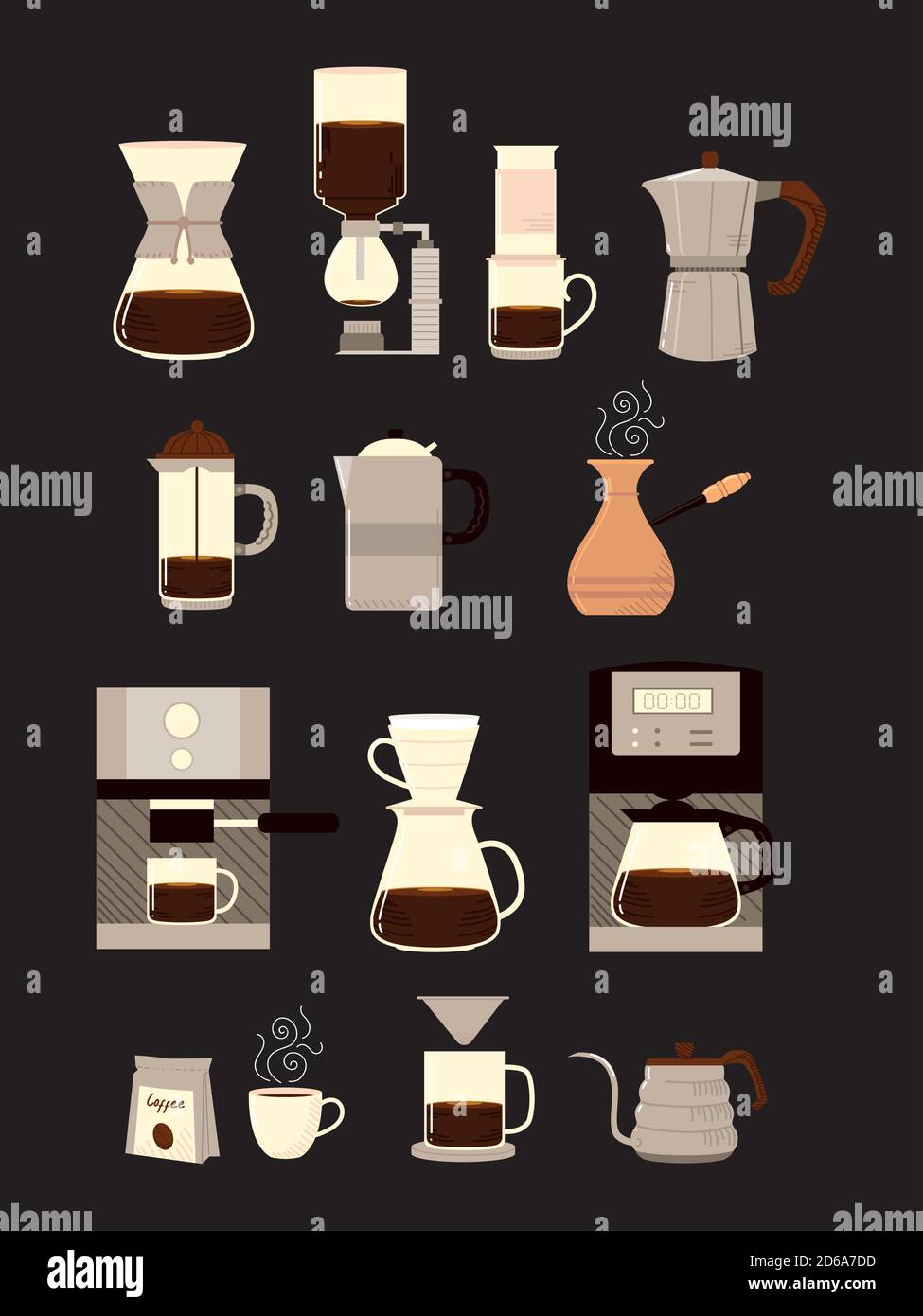Coffee Brewing Methods: Opening the Keys to the Perfect Mug in your home
Coffee Brewing Methods: Opening the Keys to the Perfect Mug in your home
Blog Article
The Science Behind Coffee Brewing: How Temperature and Time Affect Your Beverage
Comprehending the science behind coffee brewing reveals that temperature and time are not plain variables but critical elements that determine the drink's taste profile and overall top quality. The ideal developing temperature typically drops between 195 ° F and 205 ° F, while the duration of extraction differs dramatically throughout different methods. This interplay of factors can lead to a mug that is either wonderful or frustrating. As we check out the nuances of these components, the inquiry occurs: how can one effectively equilibrium temperature level and time to accomplish that ideal mixture?
The Chemistry of Coffee Removal
The chemistry of coffee extraction explores the intricate procedures that transform raw coffee beans into the fragrant beverage enjoyed worldwide. This makeover mainly entails the solubility of different substances present in the beans, which are affected by elements such as work dimension, water high quality, and the developing method utilized.
During the brewing procedure, hot water functions as a solvent, extracting soluble compounds, consisting of caffeine, sugars, lipids, and acids, from the coffee grounds. Each compound adds to the flavor account, fragrance, and body of the final beverage. Acids are responsible for appetizing and brilliant notes, while oils add to an abundant mouthfeel.
The removal process is not consistent; various substances liquify at various prices. The initial stages of developing essence acids and sugars, resulting in a pleasant acidity, while extended removal can cause anger due to over-extraction of undesirable compounds. Comprehending these chemical communications is critical for maximizing developing strategies, as the equilibrium in between removal time and water temperature level can significantly influence the general high quality of the coffee. Eventually, understanding the chemistry of coffee removal is key to accomplishing a all-around and delicious cup.
Perfect Developing Temperatures
Discovering the right developing temperature level is crucial for opening the full capacity of coffee flavors and aromas - coffee brewing methods. Research study suggests that the ideal array for brewing coffee lies in between 195 ° F to 205 ° F(90 ° C to 96 ° C) Within this array, the removal procedure efficiently liquifies the preferable soluble compounds in coffee beans, leading to a well balanced and delicious cup
Developing at reduced temperature levels, such as below 195 ° F(90 ° C ), might result in under-extraction, generating an acidic and weak brew with soft flavors. Alternatively, brewing at temperature levels exceeding 205 ° F(96 ° C) can bring about over-extraction, producing a bitter and rough preference because of the too much dissolution of unfavorable substances, such as tannins.
Furthermore, the excellent brewing temperature level can vary depending upon the coffee bean kind and roast level. Lighter roasts typically profit from slightly higher temperatures to boost their intricate flavor profiles, while darker roasts might be much better matched to lower temperatures to alleviate anger.
Ultimately, preserving precision in brewing temperatures is important for attaining an unified equilibrium of tastes, making certain that every mug of coffee supplies a satisfying sensory experience.
Impact of Developing Time
Developing time plays a crucial function in identifying the taste account and general quality of coffee. Much shorter brewing times can result in under-extraction, leading to a sour or weak taste, as not sufficient soluble compounds are liquified.
Optimal developing time differs depending on the approach utilized and the grind dimension of the coffee. For instance, a French press usually needs about 4 minutes, while coffee removal is normally completed within 25 to 30 secs. It is vital to calibrate developing time in conjunction with various other variables, such as water temperature and coffee-to-water proportion, to achieve the preferred taste profile.
Recognizing the effect of developing time enables coffee fanatics to refine their brewing strategies, eventually boosting the sensory experience of their cup (coffee brewing methods). With cautious focus to this variable, one can unlock the full possibility of the coffee, revealing its special characteristics and nuances
Developing Methods and Their Impacts

As an example, techniques like French press and cool mixture permit for a much longer steeping time, leading to a fuller body and robust flavor as a result of increased removal of oils and soluble solids. Alternatively, coffee brewing makes use of high pressure and a much shorter extraction time, creating a focused shot that stresses extreme flavors and an abundant crema.
Pour-over methods, such as Chemex or V60, use an even more controlled removal process, enabling the maker to adjust flow price and water circulation, which can improve brightness and clarity. Meanwhile, percolation hop over to here approaches cycle water more info here through the coffee grounds numerous times, leading to a stronger, often bitter taste.
Finally, using paper filters versus metal filters can likewise affect the last preference; paper filters normally yield a cleaner cup by trapping oils and fine fragments, while steel filters enable more oils to go through, adding to a fuller mouthfeel - coffee brewing methods. Recognizing these subtleties can raise the coffee experience significantly
Tips for Refining Your Mixture
A well-executed brew can change also the most basic coffee right into an exceptional experience. To achieve this, interest to information is necessary. Begin with top notch, freshly roasted beans, as their taste profile decreases in time. Grind the beans simply before brewing to make best use of freshness, ensuring the work size matches your brewing approach-- coarser for French press and finer for coffee.
Water top quality page plays a critical role; usage filtered water devoid of impurities. The perfect brewing temperature varies in between 195 ° F and 205 ° F(90 ° C to 96 ° C ) Too warm can scorch the coffee, while also awesome may under-extract tastes.
Timing is similarly important. For immersion methods, steeping for three to five minutes is ideal, whereas drip approaches typically take about five mins. Experiment with brew times to find your preferred stamina.

Conclusion
In recap, the elaborate connection between temperature level and time is extremely important in the coffee brewing procedure. Understanding these clinical concepts empowers individuals to improve their developing strategies, eventually leading to an extra well balanced and enjoyable coffee experience.
Recognizing the science behind coffee developing exposes that temperature and time are not mere variables yet essential aspects that determine the beverage's taste account and general quality. Understanding these chemical interactions is essential for optimizing developing methods, as the equilibrium in between extraction time and water temperature can considerably affect the total quality of the coffee.Brewing time plays a critical duty in figuring out the flavor profile and general high quality of coffee. By focusing on these components-- bean top quality, grind dimension, water temperature, steeping time, and proportion-- you can raise your coffee brewing procedure, resulting in a consistently premium cup.
In summary, the complex relationship in between temperature level and time is critical in the coffee brewing procedure.
Report this page